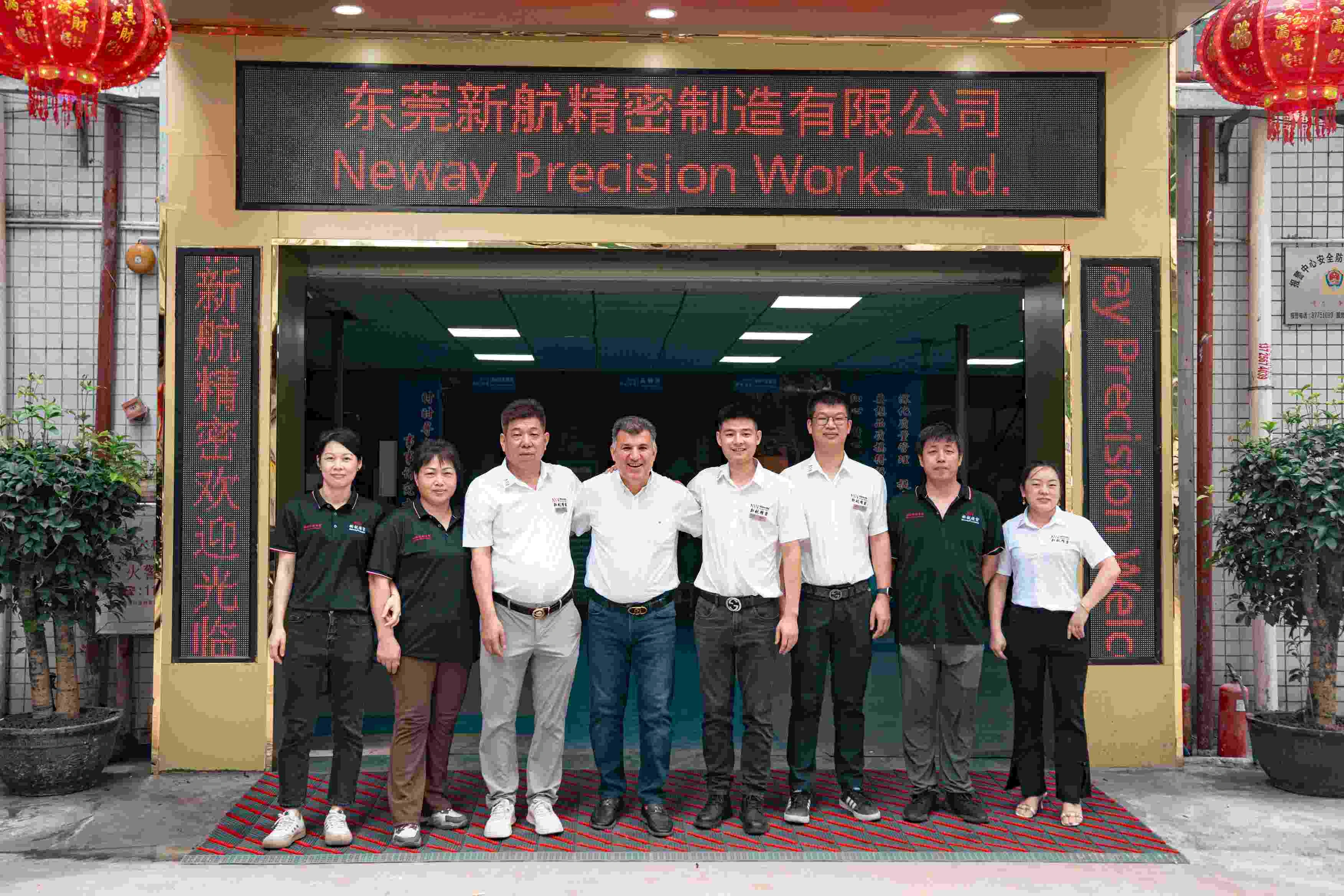Single Crystal Casting IN713LC Gas Turbines Parts
Introduction
Single crystal casting technology is essential for manufacturing advanced IN713LC nickel-based superalloy parts utilized in high-performance gas turbines for aerospace and power generation. IN713LC exhibits superior mechanical strength exceeding 1034 MPa and excellent creep resistance at elevated temperatures reaching 982°C, ideal for demanding turbine operations.
Neway AeroTech employs state-of-the-art superalloy single crystal casting technology to produce gas turbine components with precise dimensional tolerances (±0.05 mm) and controlled crystallographic orientation, significantly enhancing performance efficiency, fatigue life, and thermal durability.
Core Technology of IN713LC Single Crystal Casting
Pattern Creation and Assembly: Precise wax pattern formation via injection molding, accurately replicating complex turbine part geometries within ±0.05 mm dimensional tolerances.
Ceramic Shell Formation: Multi-layer ceramic slurry application (up to 8 layers) on wax patterns, creating durable shells approximately 7–10 mm thick for robust molds.
Autoclave Dewaxing: Molds undergo controlled dewaxing at around 150°C, fully eliminating wax without compromising mold dimensional integrity or surface smoothness.
Mold Firing Process: Shell molds are fired at about 1000°C to achieve structural rigidity, remove impurities, and stabilize mold structure prior to alloy casting.
Vacuum Induction Melting: IN713LC alloy melted under vacuum (10⁻³ Pa) conditions at 1450°C, ensuring a pure, contamination-free melt with precise chemical composition.
Single Crystal Solidification: Directional cooling of molten alloy through advanced thermal gradient control, forming defect-free single crystal structures aligned with turbine stress vectors.
Shell Removal and Cleaning: Mechanical and abrasive techniques remove ceramic shells gently, preserving single crystal orientation and maintaining critical surface finish accuracy.
Post-Casting Heat Treatment: Hot isostatic pressing (HIP) at 1150°C, 150 MPa pressure, followed by solution treatment and aging, significantly improves component integrity and performance.
Material Characteristics of IN713LC
IN713LC alloy provides the following outstanding properties:
Maximum Operating Temperature: Approximately 982°C (1800°F).
Ultimate Tensile Strength: ≥1034 MPa at room temperature.
Yield Strength: ≥862 MPa.
Elongation: ≥5%.
Creep Strength: Maintains strength above 200 MPa after 1000 hours at 760°C.
Corrosion and Oxidation Resistance: Exceptional performance under continuous high-temperature conditions.
Case Study: Single Crystal Casting IN713LC Gas Turbine Components
Project Background
Neway AeroTech partnered with an international gas turbine manufacturer seeking high-quality IN713LC single crystal parts for enhanced turbine efficiency, extended maintenance intervals, and improved operational reliability in aerospace and energy applications.
Common Gas Turbine Models
Notable gas turbine applications utilizing single crystal IN713LC components:
Rolls-Royce RB211 Gas Turbine: Widely employed in aerospace propulsion and industrial power generation, demanding robust single crystal components for extended life cycles.
General Electric LM2500: Marine propulsion and power generation turbines requiring precision single crystal blades with superior fatigue resistance and thermal management.
Pratt & Whitney PW4000 Series: Commercial aviation engines demanding single crystal turbine blades for increased operational temperatures and fuel efficiency.
Siemens SGT-800 Industrial Turbine: Industrial turbine blades designed for reliable performance under continuous high-load, high-temperature operations in power plants.
Selection and Structural Features of IN713LC Gas Turbine Parts
Typical structural and design features include:
Directionally solidified single crystal structures eliminate grain boundaries, maximizing fatigue strength.
Complex internal cooling channels are created using advanced Electrical Discharge Machining (EDM) techniques.
Thin-wall blade profiles (minimum 0.8 mm thickness) providing enhanced thermal efficiency and reduced rotational mass.
Precision surface finish achieved through superalloy CNC machining, ensuring accuracy within ±0.02 mm tolerance.
Gas Turbine Component Manufacturing Solution
Precision Pattern and Mold Development: High-accuracy wax pattern injection, ensuring precise turbine component geometries meeting aerospace and power generation standards.
Ceramic Shell Mold Preparation: Multiple slurry applications form robust ceramic molds to accurately reproduce intricate internal and external turbine features.
Vacuum Investment Casting: The Advanced vacuum investment casting process ensures defect-free casting with consistent chemical composition and metallurgical integrity.
Controlled Single Crystal Growth: Precisely controlled thermal gradients achieve optimal single crystal structures free of grain boundaries, enhancing fatigue and creep performance.
Hot Isostatic Pressing (HIP) and Heat Treatment: HIP processing at 1150°C and 150 MPa eliminates microporosity, followed by tailored heat treatments to maximize mechanical properties and durability.
Advanced CNC Machining: Precision machining finalizes aerodynamic profiles and precise dimensions, essential for maximum turbine efficiency and reliability.
Internal Channel EDM Processing: Highly precise EDM technology forms complex cooling channels, critical for managing extreme thermal gradients within components.
Final Surface Treatment and Quality Assurance: Components undergo rigorous inspection using advanced testing equipment (X-ray, CMM, ultrasonic) to ensure flawless aerospace-standard quality.
Core Manufacturing Challenges of IN713LC Single Crystal Components
Achieving defect-free single crystal structures with zero grain boundaries.
Precise control of directional solidification to align crystal orientation with operational stress vectors.
Eliminating internal defects such as microporosity and carbide precipitation.
Maintaining strict dimensional tolerances within ±0.05 mm consistently across complex geometries.
Results and Verification
Single crystal orientation successfully achieved with zero grain boundary defects, significantly enhancing component fatigue life and thermal stability.
X-ray and ultrasonic testing confirmed components are free from internal flaws, fully complying with stringent AS9100 quality standards.
Verified mechanical properties consistently exceeded industry benchmarks, with tensile strengths surpassing 1034 MPa at room temperature.
Fatigue testing validated exceptional durability exceeding 120,000 operational cycles at elevated temperatures, demonstrating substantial improvements in turbine reliability and lifespan.
FAQs
Why is single crystal casting preferred for high-temperature gas turbine applications?
Which gas turbine models commonly use IN713LC single crystal components?
How does Neway AeroTech ensure defect-free single crystal structures?
What critical testing methods confirm the quality of single crystal turbine components?
What are the achievable dimensional tolerances in single crystal cast turbine parts?

